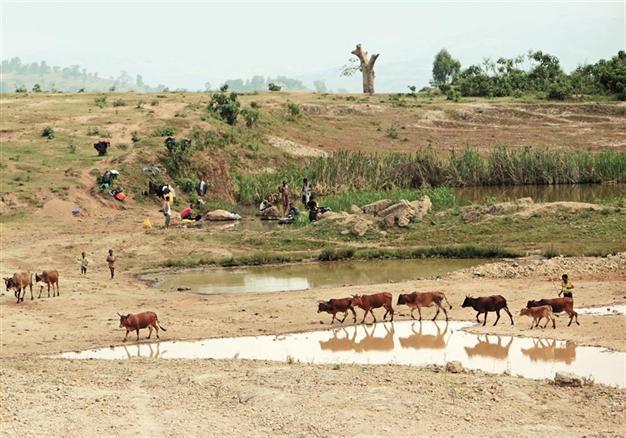Ethiopia picks green energy for sustainable growth plan
Ethiopia Parliamentary Speaker Abadulla GEMEDA

A scene from Ethiopia’s border to Sudan is seen in this file photo. Improving crop and livestock production practices is among Ethiopia’s 2025 goals.
In general energy affects all aspects of development – social, economic and environmental – including livelihoods, access to water, agricultural productivity, health, education and gender-related issues.None of the Millennium Development Goals can be met without major improvement in the quality and quantity of energy services in the country.
Ethiopia aims to achieve middle-income status by 2025 while developing a green economy. The green economy plan is based on four pillars:
- Improving crop and livestock production practices for higher food security and farmer income while reducing emissions
- Protecting and re-establishing forests for their economic and ecosystem services, including as carbon stocks
- Expanding electricity generation from renewable sources of energy for domestic and regional markets
- Leapfrogging to modern and energy-efficient technologies in transport, industrial sectors and buildings.
Today foreign companies are very interested to invest in the biofuel sector in Ethiopia. Currently local and foreign companies have applied to invest and some of them have already started operation in growing Jathropha and castor for biodiesel. At the same time the government has launched an expansion plan on sugar industries, which will create an opportunity to produce ethanol in large quantity. The biofuel development program will help to secure our fuel supplies as well as reduce its petroleum import bill through the development of an indigenous fuel production strategy such as ethanol and biodiesel.
Agro-processing
In yet another grand scheme – the Five-Year Growth and Transformation Plan (GTP) – the Ethiopian government envisages doubling agricultural production and the gross domestic product (GDP) and sustaining the rate to 14.9 percent, in the best case scenario. Indeed, the government and peoples of Ethiopia are poised to intensify economic activities in areas of agro-processing, both intensive and commercial farming, road and railway construction, ICT services expansion, trade and investment as well as energy infrastructure development.
Between now and 2015, the GTP will lay the foundation for the industrial sector to take the lead in the economy. Expansion of micro and small enterprises alongside export-led industries will be central in this regard. The strategy embraces massive infrastructure development, or social over-head capital schemes, including railway, highways, telecommunications and hydropower and wind power, to mention a few, to propel the economy in the desired direction.
The Ethiopian development roadmap, the GTP, is focused on telecom expansion, irrigation schemes, power generation, and construction of transport infrastructures and social amenities. Over the next five years, the number of mobile subscribers will reach over 61 million, dwarfing the current 4 million subscribers. Primary health care will be accessible across the whole of Ethiopia. In addition to extending the total road coverage to 64,500 kilometers, a railway network stretching for about 2,400 kilometers across the country is part of the grand scheme to completely overhaul a sector key to economic transformation.
Ethiopia is accelerating the construction of the Renaissance Dam, which will generate 6,000 MW of power and will go a long way to addressing the surge in energy demand following the transformation of the economy. Demand for energy by some estimates grows at an annual rate of 20 percent.
Finally, the most promising renewable energy sources, including wind power, solar energy, biomass, biofuel, geothermal and hydropower, are envisaged in the country’s Green Development Strategy. The major objectives of the Ethiopian energy sub-sector are, firstly, to meet the demand for power in Ethiopia by providing adequate and reliable energy supply that satisfies the required standard. The other objective is to export energy to neighboring countries for strengthening and creating economic integration with them based on mutual advantages.
















